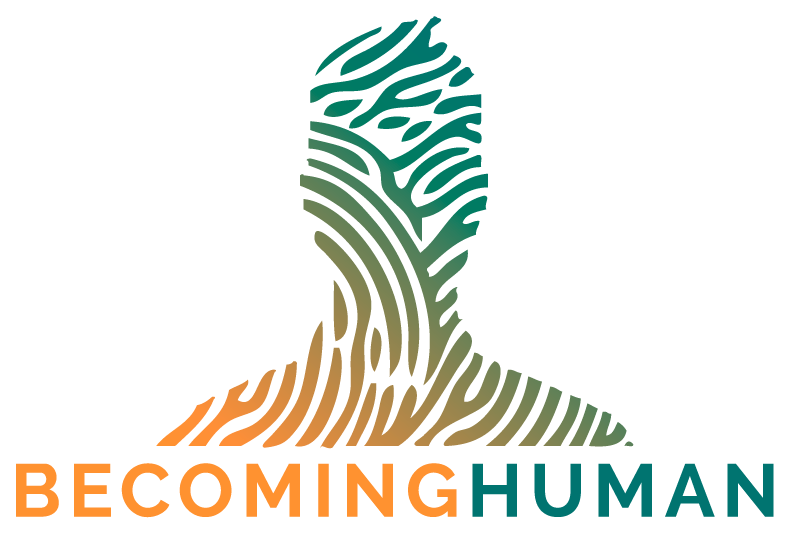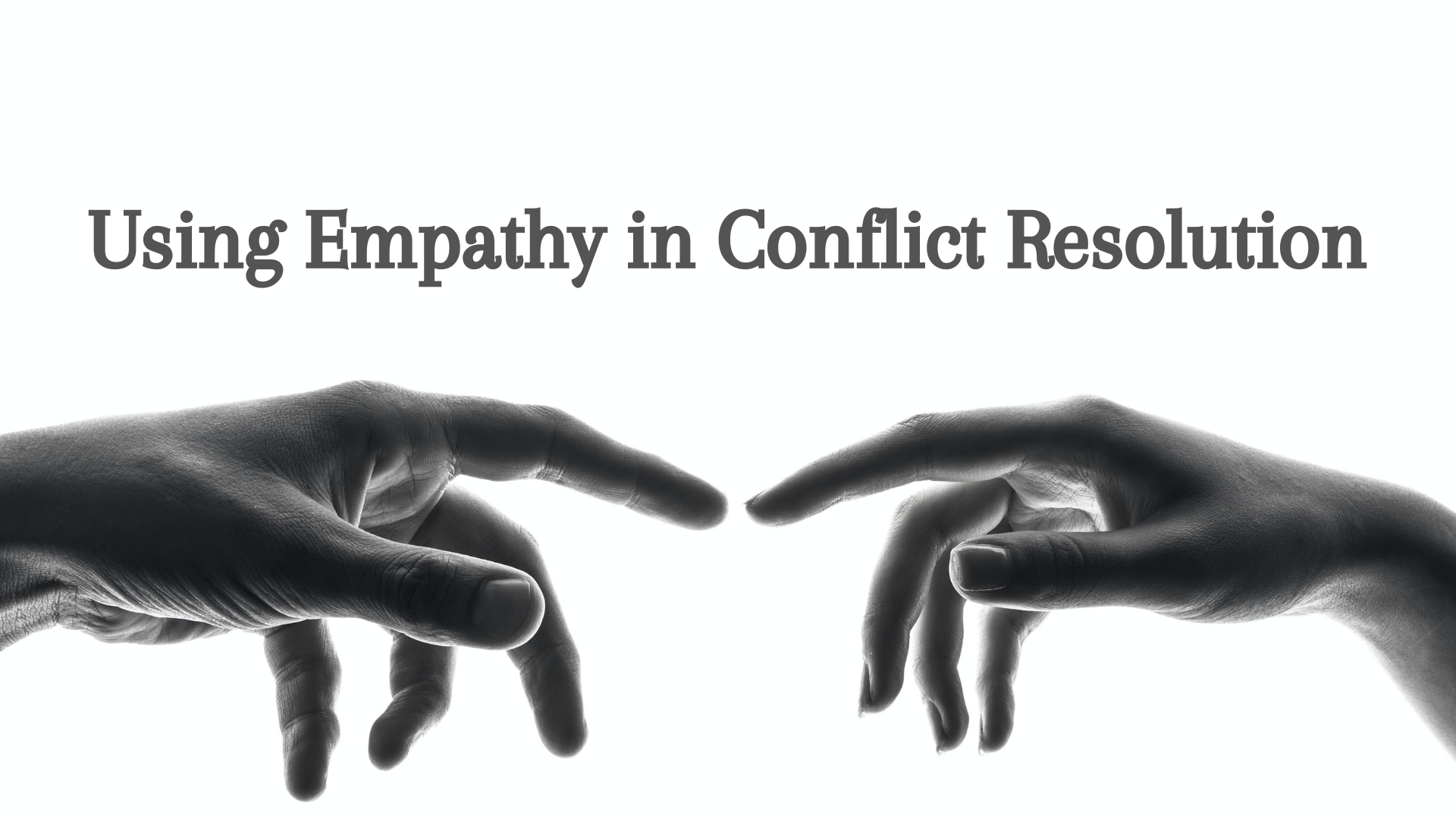The Palms, The Passover, & The Passion
/What is Really Going on With Jesus’ Last Week?
What is This?
This is a narrative utilizing traditional liturgies to paint a different picture of Jesus’ last week.
To listen to the original audio story (with original music), you can go here:
This week marks the final Sunday before Easter and, therefore, the culmination of Lent following the last week of Jesus’ life. Through Palm Sunday, Passion Sunday, Maundy Thursday, and Tenebrae — we hope to capture the experience of this final week of Lent as we begin Holy Week.
Palm Sunday is a celebration of Jesus’ entrance into Jerusalem. He is welcomed as Israel’s hope, but Israel is hoping for something different than what Jesus is bringing…this leads to his execution in collaboration with the Roman Empire.
Passion Sunday is the experience of Jesus’ execution and recounts the story of his final week (referred to as “Holy Week”) and his final hours — his arrest, betrayal, denial, torture, and death.
We will use the journey of Maundy Thursday — a festival day in the church that commemorates the last act of Jesus’ life with his disciples that emphasizes the night before he was killed.
Maundy is from the Latin word “to give a commandment” that references Jesus’ conversation with his disciples when he gives them the command to love and the command to follow the Passover meal that proclaims his death and the subversive, revolutionary Kingdom it brought on Earth. In this event, Jesus exposed the powers of all the ways the world has gone wrong…and then overcame them.
We will then use the journey of Tenebrae which is a Latin word that means “darkness” and is the traditional gathering meant to follow the story of Jesus into the darkness of the full tomb.
Our invitation is to enter this story and embrace its meaning for us today — especially in following the communion meal to where it takes Jesus — to be broken and poured and, ultimately, killed and laid in a tomb.
This is meant to be a solemn event as we practice and enter the journey that leads to the cross.
It is meant to bring us into this very real story, just as it did for the disciples, that parallels our experience today. It would have been scary for them — their Messiah was killed — but what they would soon find out is that it was their Messiah representing Israel, embodying their suffering, and inaugurating a new Exodus, a new Creation, and a new way of being human as God’s world is now being restored, made whole, and good again.
Let us join the global church in this ancient practice and may we encounter this story so that we are transformed by it.
Palm Sunday:
After the powerful experience of Jesus’ life, ministry, and teachings — Jesus’ descent to Jerusalem culminates as he is welcomed into the city.
For a more detailed account of the background, history, and original meaning of Palm Sunday, check out this podcast episode.
What initially appears as a military parade is quickly subverted as we find out Jesus is on a donkey, not a warhorse. While the Roman governor Pilate may have been entering the city on the opposite side, Jesus’ entrance is in stark, oppositional contrast to the victorious entrances most powerful people would have had. Yet, Jesus is lauded as the awaited King while Herod & Pilate still govern Israel. However, what begins with a sense of celebration descends into the realization that Jesus is a different kind of King. Their use of palm branches would be a revolutionary, political symbol, yet Jesus is not here to overthrow the government. He is here to overthrow the world. Though they wave their palm branches, the crowds along with all of Israel are soon to find out that Jesus is not the hero they expected. But he will bring the very peace and shalom the world has yearned for since its first days.
One Account of this Story Happens in the Gospel called Luke 19v28–42
After he had said this, he went on ahead, going up to Jerusalem.
When he had come near Bethphage and Bethany, at the place called the Mount of Olives, he sent two of the disciples, saying, ‘Go into the village ahead of you, and as you enter it you will find tied there a colt that has never been ridden. Untie it and bring it here. If anyone asks you, “Why are you untying it?” just say this: “The Lord needs it.” ’
So those who were sent departed and found it as he had told them. As they were untying the colt, its owners asked them, ‘Why are you untying the colt?’ They said, ‘The Lord needs it.’ Then they brought it to Jesus; and after throwing their cloaks on the colt, they set Jesus on it.
As he rode along, people kept spreading their cloaks on the road. As he was now approaching the path down from the Mount of Olives, the whole multitude of the disciples began to praise God joyfully with a loud voice for all the deeds of power that they had seen, saying,
‘Blessed is the king
who comes in the name of the Lord!
Peace in heaven,
and glory in the highest heaven!’Some of the Pharisees in the crowd said to him, ‘Teacher, order your disciples to stop.’ He answered, ‘I tell you, if these were silent, the stones would shout out.’
As he came near and saw the city, he wept over it, saying, ‘If you, even you, had only recognized on this day the things that make for peace! But now they are hidden from your eyes.”
Communion, Passover, & The Four Cups
The week begins with Jesus walking into Jerusalem as Messiah, as apparent King and Incarnated presence of God.
The Gospels begin by positioning Jesus as the representative of Israel and God’s work in the world. The creation in Genesis had initiated a tribe in the world that would bring a new creation from this people called Israel; a sort of resistance movement to the direction the world had gone. Through this covenant with these people, the fullness of love and shalom where everything would, again, be in its right place was going to happen. The first humans took the world in an estranged direction from how the world was meant to be — they disconnected from God, from one another, from themselves, and from creation. They replaced the Divine dream with their own and they missed the fullness for what the world could be. In short, they sinned.
The question was raised: Can this be forgiven? Can we be brought out of the exile we created?
In Exodus, Israel finds out the answer is yes. Slaves at the hand of the ultimate manifestation of a fractured world are liberated. The sin of all is dealt with and overcome with a new way of being in the story that will bring the world into a better future.
And this pattern continues. Again and again, Israel is brought out of exile to continue their mission for how the entire world is supposed to be.
The Gospels begin by implicating this pattern on Jesus.
Then, the Gospels end with Jesus entering the center of Israel’s life and history, Jerusalem, and, as we might expect, Jesus’ story is told as a continuation of the Exodus story. Except, this time, what is accomplished will be for the entire world.
However, Jesus enters the city and is welcomed, it is as a King that will give Israel power and domination and glory. Then he weeps — for Israel does not know what would actually give the world the very peace that was disrupted all the way back in Genesis.
Because what Jesus is doing is different. And as we are soon to find out in Jesus story, this work will deal explicitly with Passover.
Apparently, the authors of the Gospels want us to see Jesus’ life, death, and Resurrection through the lens of Exodus and exile and Israel’s covenantal mission to bring shalom to the whole world.
Which is why Exodos chapter 12 is so important.
Before Israel leaves Egypt, they are given instructions that will forever mark the importance of this moment.
That night, they were to spread the blood of a lamb on their doorposts. This was part of a series of plagues that was the result of sin in the world. Egypt had created a world that was reversing what God intended. Egypt had participated in the uncreation of the world and it was at everyone’s expense. Death was the culmination of this process. Death is the resounding note in the song of sin.
And when it comes to this reversing world we find ourselves in, no one is spared from its ramifications. Exile is to be endured by everyone. The judgment we bring into the world is to be endured by everyone. The question becomes not, “Will we experience this process?” but, rather, “How will we get through this process? How will we endure?”
Therefore, the Israelites are told, on that night in which death would culminate, to offer the blood of a lamb painted on their doorposts. For the lamb is the means of enduring the plagues.
The lamb confronts the sin and overcomes it. By these Israelites claiming this identity of this tribe and this hope, they are taking on the identity that participates in a different kind of world. That is how they will endure this judgment. That is the way through death. That is how they will enter back into the world to reverse the plagues brought by Egypt and bring God’s intended vision back to all things.
The lamb symbolized their death. The force of life that was the lamb’s blood was a symbol for their blood.
How is the world going to be changed? How will we reverse and restore this world?
Death.
A death that brings a new kind of life.
So they leave in haste with their shirts tucked in, belts tightened, and sandals on their feet. There isn’t even time to let bread rise. Forever, unleavened bread would remind them of this moment.
And then there was the meal that would be called Passover. A meal to remind them of their story, of their identity, and of their trajectory in the world that began when death passed over their homes.
And the meal dealt with bread and blood.
The Last Supper — Through the Lens of Passover
Do you see why Jesus, before he is arrested and killed, gets his disciples together for Passover? Eventually, this would be called a Seder meal which is still celebrated today. At this point in history, however, Jesus was working with a rabbinic tradition that is a bit different than what we might find at modern Seders.
The meal, itself, is fascinating. Full of music and liturgy and story and connection of humans around a table, the Passover ritual is marked by four cups and three pieces of bread. Each cup represented the four promises that God gives to Israel before they are liberated from Egypt:
“I will take you out. I will rescue you. I will redeem you. I will take you to me.”
The first cup is referred to as the Cup of Sanctification and marks the moment when they are going to be brought out of Egypt and begin their journey towards creating a new world. They would remember the promise, “I will take you out,” and recall that moment in Egypt where God intervened in their story.
They then would take unleavened bread in a stack of three. The outer pieces would be removed and the middle piece, called the afikomen, would be set aside for it represented the bread they ate after they were freed. The outer pieces would be eaten, remembering God’s providence through the manna that was given in the wilderness.
Then would be the second cup — the Cup of Deliverance — and they would remember the promise, “I will rescue you.”
Following this would be a meal full of different foods and rituals that would recall the story of Exodus.
Next, once the meal was finished, they would take the bread that was previously set aside, the afikomen. This bread represented the work God was still doing in the world; that which hadn’t fully happened yet and was still to come. As they remembered that night of being brought out of Egypt, they would proclaim that God is still bringing the world out of Egypt. That God is still putting the world back together. That the story is not finished and God is still pulsating this work through the fabric of all creation. Eventually this became the hope for Messiah who would come and catalyze this work.
Once the afikomen was shared, they would take the third cup, the Cup of Redemption and remember the promise, “I will redeem you.” God had brought them out of Egypt, but the work was not finished. Redemption was still unfolding and they hoped to continue what started in Exodus.
After that cup, a traditional hallel was sung, usually a Psalm. Then would be the fourth cup, the Cup of Completion. “I will take you to me.” They ended Passover with the hope that, one day, this would be finished and the meal would no longer be necessary.
Have you ever noticed what Jesus does with his disciples?
Matthew’s Gospel portrays the moment this way:
While they were eating, Jesus took a piece of bread, and after blessing it he broke it, gave it to the disciples, and said, ‘Take, eat; this is my body.’ Then he took a cup, and after giving thanks he gave it to them, saying, ‘Drink from it, all of you; for this is my blood of the covenant, which is poured out for many for the forgiveness of sins. I tell you, I will never again drink of this fruit of the vine until that day when I drink it new with you in my Father’s kingdom.’ When they had sung the hymn, they went out to the Mount of Olives.
While they were eating the meal, Jesus takes bread. Which bread? The afikomen.
You know the bread that these people had been talking about for centuries? The one that marked that God would finished the work God started? The bread that symbolized the fulfillment of Exodus for the entire world? These disciples would have been doing this since they were children.
Jesus takes that bread and all of its meaning within the Passover meal.
And says it is his body.
He is doing what this bread is about.
Then he takes the cup. But remember, there were four cups. Which cup comes after the meal and after the afikomen? The third cup. The Cup of Redemption. The cup that they always drank to mark Israel’s forgiveness and restoration. The cup that catalyzed the continuation of Exodus in the world.
Jesus takes that cup and says it is his blood. The forgiveness of sins. The liberation from exile. Enduring the curses to reverse and restore all things.
This work in the world will be enacted through him. Through his blood.
They then leave the fourth cup on the table; apparently noting that the work is not yet finished. They sing the hallel. And they leave.
Jesus did not hand his followers a clever ritual. He sat with his disciples who knew Passover, who celebrated it every year, who anticipated the vision Passover portrays — and Jesus redefined it. Everything these disciples, as well as the generations of Israel since Egypt, had been waiting for — Jesus says is about to actually happen.
And it would happen by Jesus being broken and poured for the healing of the world.
What is Jesus’ death and Resurrection about?
This.
Passover.
Exodus.
The world being put back together.
Enduring the sin and exile of the universe to bring about a whole new creation right in the midst of this one.
Which is why the apostle Paul commands that every time we celebrate this meal, we proclaim this work in the world. And not just through our voices, but through our lives — that as we take in this bread and this cup to our bodies, we, too, become this bread and this cup. That the action of Jesus’ body and blood becomes our body and blood.
For the healing of the world.
For an Exodus that reaches out and wraps its arms around all things.
For a world that finds the restoration that God has been unfolding since the beginning.
For this tribe called Israel to paint this body and this blood on the doorposts of the universe and make all things good again.
The Passion
Can you imagine being there for that meal?
Everything Israel was waiting for is happening. The hope of this story was being put on display.
Except there is a slight detail that may cause a problem. How is this story going to happen?
Palm branches, right? Jesus, as Messiah, as Israel’s new king is going to confront Caesar through military revolution, right? No. This will be a different kind of revolution; a different kind of subversive resistance. One where the bread and the cup come to life by being broken and poured. That’s not how Messiah was supposed to work.
You have this groundbreaking moment and then the story goes in the complete opposite direction of what was supposed to happen.
Because what does Jesus do next as the fulfillment of this glorious meal?
He is betrayed.
Arrested.
Abandoned.
Ridiculed.
Falsely accused.
Rejected.
Beaten.
And executed as a rebel to the Empire.
I’m not surprised that his disciples ran and hid.
Because, in their minds, everything Jesus said at that meal didn’t seem to work. All was now lost. It was over.
But they would find out that this is exactly the way the world would endure the curses and restore the world; just like the lamb.
By being broken and poured.
That is the means by which the world is healed, sin is reversed, and all of creation is put back together. That’s what gets painted on the doorposts of the universe.
If we are going to do this work and tell this story, we must recall that this is the invitation for us, too. Is this why the apostle named Paul, in recounting this moment in his first letter to the Corinthian community, offers the now-famous liturgy, “Do this in remembrance of me?”
What does Paul mean? Do what in remembrance of Jesus? Take the meal? Do the liturgy? Participate in the ritual now called Communion or Eucharist?
Or something else?
What if the thing we are invited to do is the very thing Jesus did? To be broken and poured for the healing of the world. To follow Jesus’ whole way of life in remembrance of the work he was unleashing in the world. Even to death.
Because death is what brings a new kind of life. A new kind of world.
Do this kind of life in remembrance of me.
And that’s where the story seems to end.
At a full tomb.
Because before the tomb can be empty, it must be full.
And the world will never be the same.
Service of Tenebrae — Movement to Death & Darkness
This is best listened to. You can find an audio story version here.
Mark 14v32–46
They went to a place called Gethsemane; and he said to his disciples, ‘Sit here while I pray.’ He took with him Peter and James and John, and began to be distressed and agitated. And he said to them, ‘I am deeply grieved, even to death; remain here, and keep awake.’
And going a little farther, he threw himself on the ground and prayed that, if it were possible, the hour might pass from him. He said, ‘Abba, Father, for you all things are possible; remove this cup from me; yet, not what I want, but what you want.’
He came and found them sleeping; and he said to Peter, ‘Simon, are you asleep? Could you not keep awake one hour? Keep awake and pray that you may not come into the time of trial; the spirit indeed is willing, but the flesh is weak.’ And again he went away and prayed, saying the same words. And once more he came and found them sleeping, for their eyes were very heavy; and they did not know what to say to him.
He came a third time and said to them, ‘Are you still sleeping and taking your rest? Enough! The hour has come; the Son of Man is betrayed into the hands of sinners. Get up, let us be going. See, my betrayer is at hand.’
Immediately, while he was still speaking, Judas, one of the twelve, arrived; and with him there was a crowd with swords and clubs, from the chief priests, the scribes, and the elders. Now the betrayer had given them a sign, saying, ‘The one I will kiss is the man; arrest him and lead him away under guard.’ So when he came, he went up to him at once and said, ‘Rabbi!’ and kissed him. Then they laid hands on him and arrested him.
Have You Forsaken Me?
My God, have you forsaken me?
Forsaken me?
Forsaken me?
My God, have you forsaken me?
Forsaken me?
Forsaken me?
Mark 14v53–65
They took Jesus to the high priest; and all the chief priests, the elders, and the scribes were assembled. Peter had followed him at a distance, right into the courtyard of the high priest; and he was sitting with the guards, warming himself at the fire.
Now the chief priests and the whole council were looking for testimony against Jesus to put him to death; but they found none. For many gave false testimony against him, and their testimony did not agree. Some stood up and gave false testimony against him, saying, ‘We heard him say, “I will destroy this temple that is made with hands, and in three days I will build another, not made with hands.” ’ But even on this point their testimony did not agree. Then the high priest stood up before them and asked Jesus, ‘Have you no answer? What is it that they testify against you?’ But he was silent and did not answer. Again the high priest asked him, ‘Are you the Messiah, the Son of the Blessed One?’
Jesus said, ‘I am; and
“you will see the Son of Man
seated at the right hand of the Power”,
and “coming with the clouds of heaven.” ’
Then the high priest tore his clothes and said, ‘Why do we still need witnesses? You have heard his blasphemy! What is your decision?’ All of them condemned him as deserving death. Some began to spit on him, to blindfold him, and to strike him, saying to him, ‘Prophesy!’ The guards also took him over and beat him.
Have You Forsaken Me?
My God, have you forsaken me?
Forsaken me?
Forsaken me?
My God, have you forsaken me?
Forsaken me?
Forsaken me?
Mark 15v6–15
Now at the festival he used to release a prisoner for them, anyone for whom they asked. Now a man called Barabbas was in prison with the rebels who had committed murder during the insurrection. So the crowd came and began to ask Pilate to do for them according to his custom.
Then he answered them, ‘Do you want me to release for you the King of the Jews?’ For he realized that it was out of jealousy that the chief priests had handed him over.
But the chief priests stirred up the crowd to have him release Barabbas for them instead. Pilate spoke to them again, ‘Then what do you wish me to do with the man you call the King of the Jews?’ They shouted back, ‘Crucify him!’
Pilate asked them, ‘Why, what evil has he done?’ But they shouted all the more, ‘Crucify him!’
So Pilate, wishing to satisfy the crowd, released Barabbas for them; and after flogging Jesus, he handed him over to be crucified.
Were You There When They Crucified My Lord?
Were you there when they crucified my Lord?
Were you there when they crucified my Lord?
Oh, sometimes it causes me to tremble…tremble…tremble…
Were you there when they crucified my Lord?
Mark 15v25–32
It was nine o’clock in the morning when they crucified him. The inscription of the charge against him read, ‘The King of the Jews.’ And with him they crucified two bandits, one on his right and one on his left. Those who passed by derided him, shaking their heads and saying, ‘Aha! You who would destroy the temple and build it in three days, save yourself, and come down from the cross!’ In the same way the chief priests, along with the scribes, were also mocking him among themselves and saying, ‘He saved others; he cannot save himself. Let the Messiah, the King of Israel, come down from the cross now, so that we may see and believe.’ Those who were crucified with him also taunted him.
Were You There When They Crucified My Lord?
Were you there when they nailed him to the tree?
Were you there when they nailed him to the tree?
Oh, sometimes it causes me to tremble…tremble…tremble…
Were you there when they nailed him to the tree?
Matthew 27v45–50
From noon on, darkness came over the whole land until three in the afternoon. And about three o’clock Jesus cried with a loud voice, ‘Eli, Eli, lema sabachthani?’ that is, ‘My God, my God, why have you forsaken me?’
When some of the bystanders heard it, they said, ‘This man is calling for Elijah.’ At once one of them ran and got a sponge, filled it with sour wine, put it on a stick, and gave it to him to drink. But the others said, ‘Wait, let us see whether Elijah will come to save him.’
Then Jesus cried again with a loud voice and breathed his last.
Were You There When They Crucified My Lord?
Were you there when they laid him in the tomb?
Were you there when they laid him in the tomb?
Oh, sometimes it causes me to tremble…tremble…tremble…
Were you there when they laid him in the tomb?
John 19v38–42
After these things, Joseph of Arimathea, who was a disciple of Jesus, though a secret one because of his fear of the Jews, asked Pilate to let him take away the body of Jesus. Pilate gave him permission; so he came and removed his body.
Nicodemus, who had at first come to Jesus by night, also came, bringing a mixture of myrrh and aloes, weighing about a hundred pounds. They took the body of Jesus and wrapped it with the spices in linen cloths, according to the burial custom of the Jews.
Now there was a garden in the place where he was crucified, and in the garden there was a new tomb in which no one had ever been laid.
And so, because it was the Jewish day of Preparation, and the tomb was nearby, they laid Jesus there.
Enter the full tomb.
Experience the descent.
And allow this story to move the world forward.
Because the story doesn’t end there…











![Three Reasons We're Lonely - [And Three Responses For Being Less So]](https://images.squarespace-cdn.com/content/v1/5963d280893fc02db1b9a659/1651234022075-7WEKZ2LGDVCR7IM74KE2/Loneliness+3+update+%283%29.png)





























